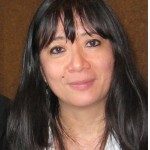Link to Pubmed [PMID] – 30265716
PLoS ONE 2018;13(9):e0204710
The recent yellow fever epidemic in Brazil has raised the concern of outbreaks in neighboring countries, particularly in the Caribbean region where the vector Aedes aegypti is predominant. This threat comes from the past when in the Americas, this disease caused devastating urban epidemics. We report the vector competence of Ae. aegypti from Guadeloupe for yellow fever virus by determining different parameters describing virus infection, dissemination, and transmission. The results indicate that Ae. aegypti Guadeloupe are susceptible to yellow fever virus with viral particles detected in mosquito saliva at 14 and 21 days post-infection. Local authorities and more broadly, international organizations should maintain the active surveillance of Aedes mosquitoes and the spreading of human cases from South America.

